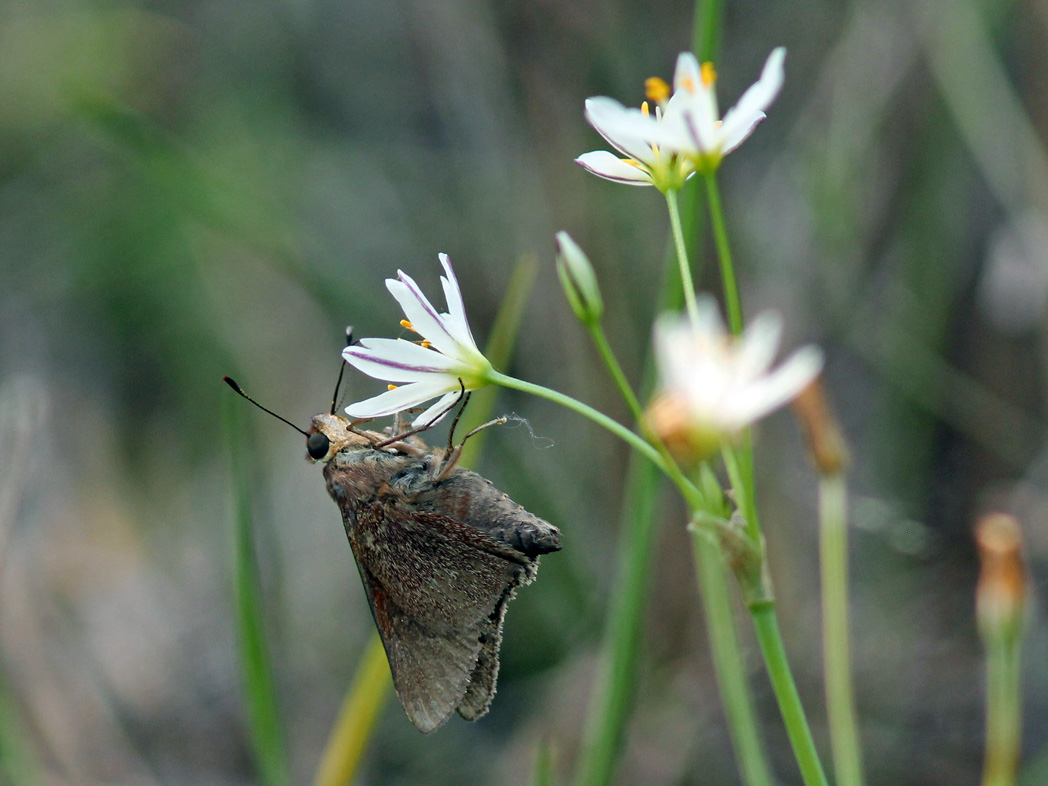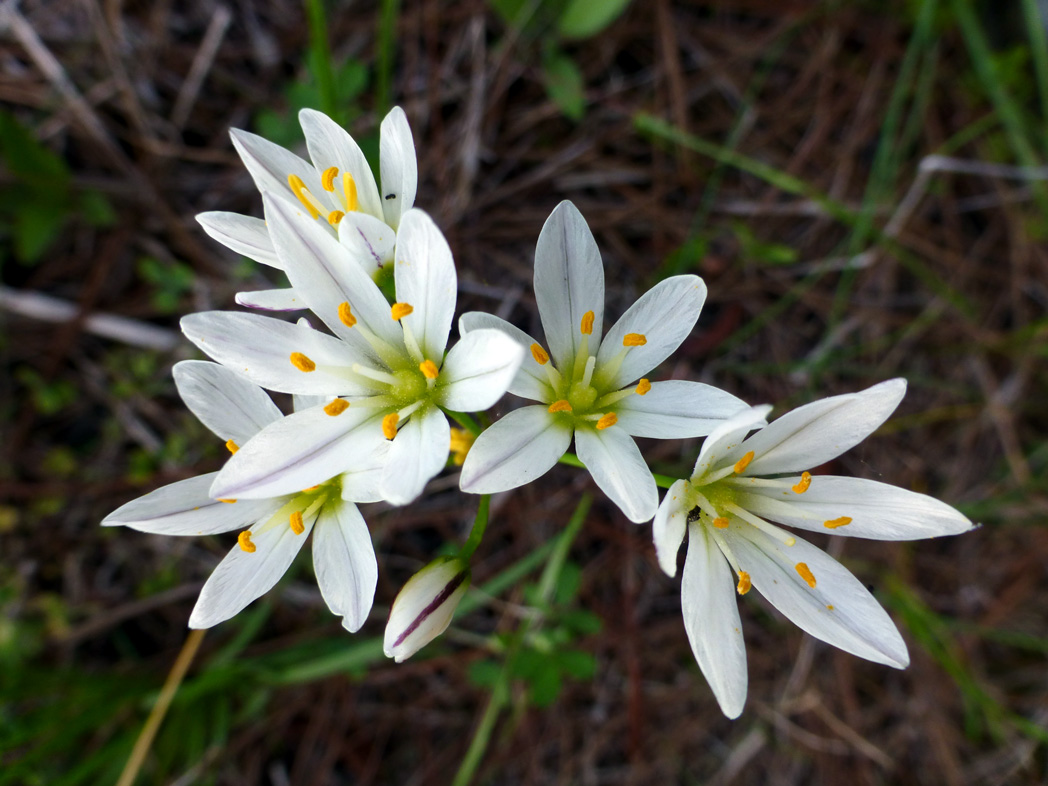False garlic
Pictured above: False garlic (Nothoscordum bivalve) by Eleanor Dietrich. Click on terms for botanical definitions. View post as a PDF
False garlic is a grasslike perennial with attractive star-shaped flowers. It typically blooms late winter through spring, but may bloom again in or continue blooming into fall. The unscented flowers attract a variety of pollinators, including small butterflies and native bees. The plant occurs naturally in moist woodlands and grasslands and along roadsides in North and Central Florida.
False garlic’s flowers have six erect or spreading whitish tepals, each with a distinct midvein that is greenish-yellow on the upper surface and reddish-purple on the underside. Tepal bases are greenish-yellow, as is the superior ovary. Stamens number six with large yellow-orange anthers. The inflorescence is a terminal umbel consisting of three to six or more flowers. Leaves are long, linear and basal. Leaf blades are smooth with parallel venation. Margins are entire. The plant arises from a fleshy underground bulb. Stems are sheathed. Seeds are born in capsules.
False garlic is also known as Crowpoison and was formerly listed as Allium bivalve. The plant is often confused with Wild garlic (Allium canadense), but False garlic tends to have fewer flowers and lacks the telltale onion/garlic smell of Wild garlic. And unlike Wild garlic, False garlic is not edible and may be toxic if consumed. Both are former members of the Amaryllidaceae, Liliaceae and Alliaceae families. Current taxonomy treats Alliaceae as Alloideae, a subfamily of Amaryllidaceae. Some botanists still accept Alliaceae as its own family and place both Nothoscordum and Allium within it.

Monk skipper (Asbolis capucinus) on False garlic. Notice the purplish midvein on the tepal undersides. Photo by Mary Keim
Family: Amaryllidaceae (Amaryllis or daffodil family)
Native range: Panhandle, peninsula to Brevard and Hillsborough counties, Lee County
To see where natural populations of False garlic have been vouchered, visit florida.plantatlas.usf.edu.
Lifespan: Perennial
Hardiness: Zones 8A–10A
Soil: Moist well-drained soils
Exposure: Full sun to minimal shade
Growth habit: 1–2’ tall
Propagation: Seed
Garden tips: False garlic is generally not available commercially. Look for it in a natural area, or consider its twin, Wild garlic, as a possible alternative for your landscape.

